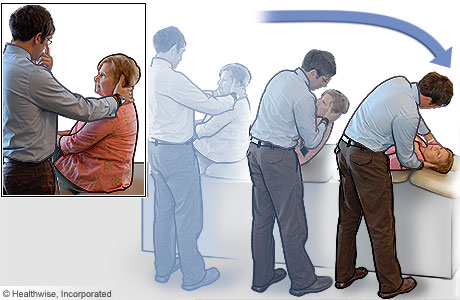Dix-Hallpike Test for Vertigo
Current as of: October 21, 2018
Author: Healthwise Staff
Medical Review:Anne C. Poinier, MD – Internal Medicine & Kathleen Romito, MD – Family Medicine & E. Gregory Thompson, MD – Internal Medicine
For this test, you are seated on an exam table. The doctor may ask you to look at his or her nose the whole time the test is done. The doctor first turns your head to one side and then lowers your head to the table. The doctor watches your eyes for nystagmus. Nystagmus is a rapid, rhythmic movement of the eyes. If you…
Current as of: October 21, 2018
Author: Healthwise Staff
Medical Review:Anne C. Poinier, MD - Internal Medicine & Kathleen Romito, MD - Family Medicine & E. Gregory Thompson, MD - Internal Medicine
10/21/2018
This information does not replace the advice of a doctor. Healthwise, Incorporated, disclaims any warranty or liability for your use of this information. Your use of this information means that you agree to the Terms of Use. Learn how we develop our content.


For this test, you are seated on an exam table. The doctor may ask you to look at his or her nose the whole time the test is done.
The timing of the onset of dizziness helps the doctor locate the cause of the dizziness or vertigo.
Current as of: October 21, 2018
Author: Healthwise Staff
Medical Review:Anne C. Poinier, MD – Internal Medicine & Kathleen Romito, MD – Family Medicine & E. Gregory Thompson, MD – Internal Medicine
This information does not replace the advice of a doctor. Healthwise, Incorporated, disclaims any warranty or liability for your use of this information. Your use of this information means that you agree to the Terms of Use. Learn how we develop our content.
Current as of: October 21, 2018
Author: Healthwise Staff
Medical Review:Anne C. Poinier, MD - Internal Medicine & Kathleen Romito, MD - Family Medicine & E. Gregory Thompson, MD - Internal Medicine
10/21/2018
This information does not replace the advice of a doctor. Healthwise, Incorporated, disclaims any warranty or liability for your use of this information. Your use of this information means that you agree to the Terms of Use. Learn how we develop our content.
